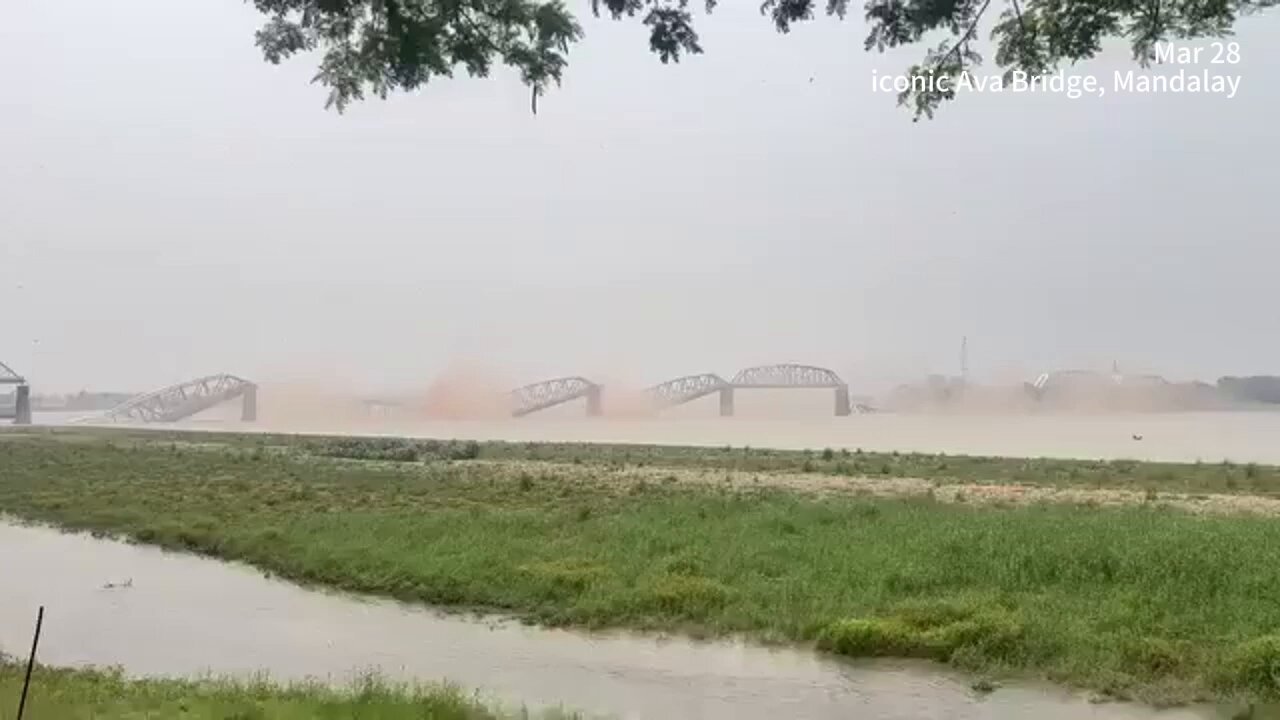Myanmar earthquake triggers collapse of iconic Ava Bridge; Chaos in Thailand’s Bangkok
Myanmar’s iconic Ava Bridge, built by the British in 1934, collapsed after a 7.7 magnitude earthquake struck the country. The tremors also caused panic in neighbouring Thailand, where hundreds of people rushed out of buildings. A skyscraper under construction in Thailand’s capital Bangkok collapsed following the quake, as reported by web sources.
Widespread panic and structural concerns
There has been no immediate report from Myanmar on the extent of damage. The German Research Centre for Geosciences reported that the earthquake had a depth of 10 kilometres, with its epicentre near Mandalay in the northern region of the country. In Bangkok, metro and rail services were suspended for safety checks as residents described scenes of panic, with some fleeing high-rises in bathrobes. Social media posts from Mandalay showed collapsed buildings and debris-strewn streets, hinting at significant destruction in a region already strained by civil unrest following a 2021 coup.
 Joseph Çiprut on Twitter / X Just experienced a 7.7 strength #earthquake in #Bangkok for close to 3 minutes. Its epicenter was Mandalay, Myanmar, over 1200 kms from here.Despite the distance it swayed buildings; caused cracks, forced evacuations and rooftop pools cascaded much water to down below. Scary! pic.twitter.com/iIeV7WQWN6— Joseph Çiprut (@mindthrust) March 28, 2025 Joseph Çiprut Twitter
Joseph Çiprut on Twitter / X Just experienced a 7.7 strength #earthquake in #Bangkok for close to 3 minutes. Its epicenter was Mandalay, Myanmar, over 1200 kms from here.Despite the distance it swayed buildings; caused cracks, forced evacuations and rooftop pools cascaded much water to down below. Scary! pic.twitter.com/iIeV7WQWN6— Joseph Çiprut (@mindthrust) March 28, 2025 Joseph Çiprut Twitter
Skyscraper collapse in Bangkok
In neighbouring Thailand also the impact was severe. In Bangkok, a skyscraper collapsed near the bustling Chatuchak market crumbling into a cloud of dust, leaving authorities scrambling to assess potential casualties among the workers on-site.
Videos circulating on social media captured the dramatic moment, showing the multistory structure with a crane on top disintegrating, while another clip revealed water splashing out of rooftop infinity pools in high-rises across the city.
Regional impact and historical context
The tremors were felt as far as China’s Yunnan province and India’s Delhi NCR, underscoring the quake’s reach.
Myanmar, located near the Sagaing Fault, is no stranger to seismic activity, with past quakes like the 2016 Bagan earthquake causing fatalities.
 鳳凰資訊 PhoenixTV News on Twitter / X #BREAKING A 7.9-magnitude earthquake struck Myanmar, according to the China Earthquake Networks Center. Neighboring regions, including Thailand and China's Yunnan Province, felt significant tremors. #Myanmar #earthquake pic.twitter.com/qgRHQ7ltjl— 鳳凰資訊 PhoenixTV News (@PhoenixTV_News) March 28, 2025 鳳凰資訊 PhoenixTV News Twitter
鳳凰資訊 PhoenixTV News on Twitter / X #BREAKING A 7.9-magnitude earthquake struck Myanmar, according to the China Earthquake Networks Center. Neighboring regions, including Thailand and China's Yunnan Province, felt significant tremors. #Myanmar #earthquake pic.twitter.com/qgRHQ7ltjl— 鳳凰資訊 PhoenixTV News (@PhoenixTV_News) March 28, 2025 鳳凰資訊 PhoenixTV News Twitter
The collapse of the Ava Bridge, a key link between Ava and Sagaing over the Irrawaddy River, highlights the vulnerability of aging infrastructure. Experts warn that the region’s strained resources and ongoing conflicts may hinder recovery efforts, raising concerns about long-term economic and humanitarian impacts.











